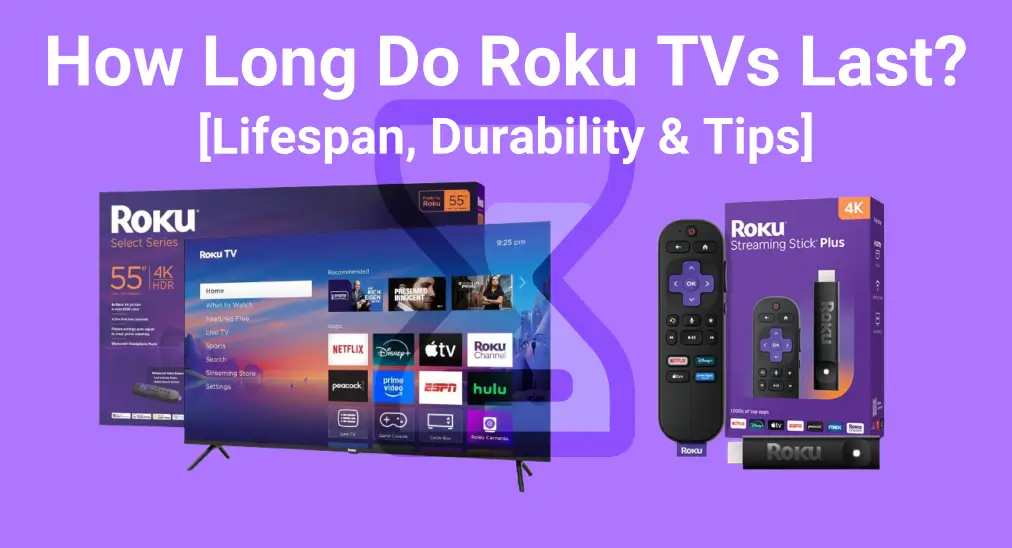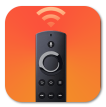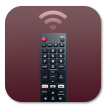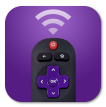
Many households choose Roku TVs for their mix of affordability, simple streaming interface, and broad app selection. Over time, a natural concern arises about their durability and performance. 方法 long do Roku TVs last? This guide takes a closer look at the typical lifespan of Roku TVs, the common factors, the issues owners may face, and practical tips to make your Roku TV last longer.
目次
How Long Do Roku TVs Last?
On average, a Roku TV lifespan lasts between 5 to 7 years with regular use. With proper care and moderate usage, some Roku TVs can last up to 8–10 years before experiencing major issues like screen dimming or performance slowdowns. The lifespan depends largely on:

- Usage hours: TVs that run 10+ hours a day wear out faster.
- Brightness settings: Running at maximum brightness shortens LED life.
- Build quality: Roku TVs are made by brands like TCL, Hisense, and Onn, each with varying quality.
- Care and maintenance: Dust, overheating, and power surges can all reduce longevity.
How Long Does a Roku Stick Last?
On average, a Roku streaming stick lasts between 3 to 5 years with regular use. With proper care and moderate usage, some sticks can function smoothly for up to 6 years before experiencing major issues like slow performance or software incompatibility. The lifespan depends largely on:

- Usage hours: Continuous streaming for many hours a day can wear out the device faster.
- Heat exposure: Sticks placed in poorly ventilated areas or behind TVs that trap heat may degrade sooner.
- Power quality: Frequent power surges or using low-quality adapters can reduce longevity.
- Software updates and maintenance: Keeping the device updated and occasionally unplugging it can help maintain performance and Roku lifespan.
Signs to Replace Your Roku TV or Stick
Do Roku TVs go bad? Even with proper care, there comes a point when it's better to replace your Roku TV or streaming stick. Common signs that your device is nearing the end of its life include:
- Dimming or Stuttering: If your TV screen looks noticeably dim or your streaming stick stutters during playback, it could be a sign that the device is wearing out.
- Display Issues: The appearance of dead pixels or other screen problems indicates potential hardware failure in your Roku TV.
- App Crashes and Freezing: Frequent crashes, freezing, or unresponsive apps suggest the device is struggling to handle normal tasks.
- Overheating or Strange Noises: もし Roku TV or stick overheats or makes unusual sounds, it may be a sign of internal hardware problems.
- Update Failures: When your device can no longer install new Roku updates or support apps, it's usually time to consider replacing it.
How to Extend Roku's Lifespan
Every TV has a natural lifespan, but with a few simple habits, you can help your Roku TV stay in top condition for years. By paying attention to usage, maintenance, and environment, you can reduce wear and avoid common issues that shorten the device's life. Here are some practical tips:
Adjust Brightness Settings
Running your TV at maximum brightness constantly can wear out the backlight faster. Lowering the brightness helps preserve the display and reduces overall strain on the TV.
Turn Off When Not in Use
Keeping your Roku TV on continuously can shorten its lifespan and increase energy consumption. To protect your device and reduce wear, turn your Roku off when you're not watching, even for short periods.

Using a sleep timer or setting your TV to enter standby mode automatically can make this easier, helping your TV last longer while also lowering your electricity bills. Regularly powering down your TV also gives internal components a chance to cool, which can prevent overheating and potential hardware issues.
Provide Proper Ventilation
Make sure your Roku TV is placed in a cool, open area with good airflow. Avoid putting it inside tight cabinets or enclosed spaces where heat can accumulate, as excessive heat can damage internal components and reduce the TV's lifespan.
Use a Surge Protector
Power surges can damage your Roku TV's internal circuits and potentially shorten its lifespan. To protect your device from unexpected spikes, always plug it into a reliable surge protector. This simple step can prevent costly repairs, protect your investment, and ensure your TV continues running smoothly for years.
Clean Regularly
Dust and debris can accumulate on your Roku TV, blocking vents and causing overheating. To keep your TV running efficiently, wipe the screen and ventilation areas regularly with a soft microfiber cloth. Regular cleaning helps maintain proper airflow, prevents performance issues, and extends the lifespan of your device.
ソフトウェアを更新する
Keeping your Roku TV and apps up to date helps it run smoothly, fixes bugs, and improves security, which can prevent problems that shorten its lifespan. Roku devices usually update automatically every 24–36 hours, so most of the time you don't need to do anything.
If updates aren't happening automatically, it's a good idea to check manually a couple of times a year to make sure you're getting the latest features and improvements. You can see if your Roku needs an update by following these steps:

ステップ1. 押してください ホーム Button on Your Remote.
ステップ2. メニュウの中に、 設定 > システム > ソフトウェアアップデート.
ステップ3. 選択 ""now そして Updatenow.
ヒント: もしあなたの ロクのリモコンが機能していません。、 あなたは を試すことができます。 virtual Roku remote control from BoostVision. After a simple pairing process, you can click the onscreen buttons on the remote app to update your Roku smoothly.

リモコンアプリをダウンロードしてRoku TVを操作する
要約すると
How long do Roku smart TVs last? On average, Roku TVs last between 5 and 7 years, and Roku streaming sticks generally have a shorter lifespan of 3 to 5 years. While all electronics experience natural wear over time, following simple maintenance practices such as lowering brightness, preventing overheating, and keeping software up to date can help you get the most out of your Roku devices.
How Long Do Roku TVs Last FAQ
Q: Why does Roku TV stop working?
Roku TV can stop working due to software glitches, outdated firmware, connectivity issues, hardware problems, overheating, power surges, or prolonged use without proper maintenance.
Q: How do you know when it's time to replace your Roku?
Common indicators include frequent app crashes or freezing, slow performance, stuttering during playback, display problems like dimming or dead pixels, overheating, unusual noises, or failure to receive software updates. When these problems become persistent, it usually means the device has reached the end of its useful life.








